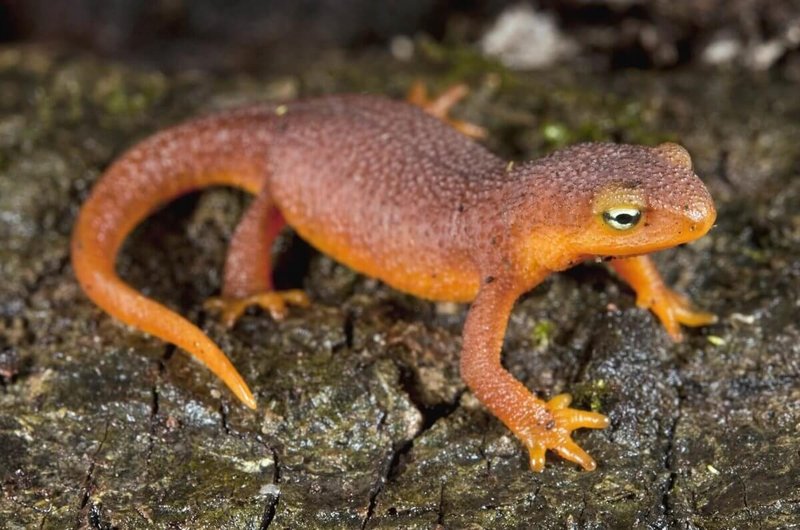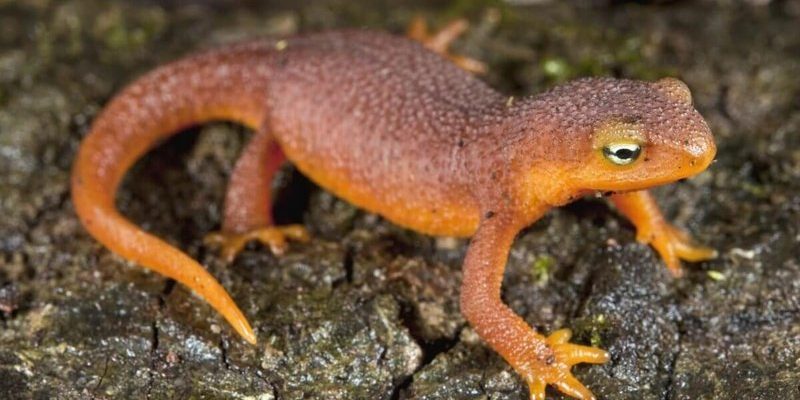
You might be wondering, why should we care about these little critters? Well, newts play a crucial role in keeping our environment balanced. They act as indicators of ecosystem health, and understanding them can help us protect our wetlands. So, let’s peel back the layers of common beliefs about newts, separating fact from fiction. Grab your favorite beverage, and let’s explore the world of these fascinating amphibians!
Understanding Newts: What Are They Really?
Newts belong to the family Salamandridae, which makes them relatives of all salamanders. Unlike frogs, who are primarily known for their long hops and ribbits, newts have a more complex life cycle. They undergo a metamorphosis that includes living in water as larvae before transforming into their adult forms. If you’ve ever seen a tadpole transform, you can think of newts in a similar light but with their unique twist.
You might come across three main types of newts: the *Eastern Newt*, *Western Newt*, and *Red-Spotted Newt*. Each one has its own nifty features and behaviors that help them thrive in various environments. For instance, the Eastern Newt is known for its bright orange color during specific life stages, which can be quite a spectacle when they’re swimming around.
It’s also worth noting that newts can be found in various habitats, from forests to grasslands. They often prefer areas with plenty of moisture, as their permeable skin makes them sensitive to dry conditions. So, keeping their natural habitat healthy is vital for their survival.
Myth 1: Newts Are Poisonous
One of the most persistent myths about newts is that they are outright toxic if touched. Here’s the thing: some newts do produce toxins, but this does not mean they are a danger to humans. For example, the *Eastern Newt* has a toxin called *tetrodotoxin*, which can cause discomfort if ingested, but it doesn’t pose a severe threat to most people.
Most newts use their toxins as a defense mechanism against predators rather than a direct threat to humans. In fact, the vibrant colors of some newts serve as a warning sign to potential predators about their toxicity. This fascinating defense strategy is known as aposematism, where bright colors signal danger. So while your curiosity might prompt you to gently touch a newt, it’s probably better to admire them from a distance!
Myth 2: Newts and Salamanders Are the Same
You might hear people use the terms newt and salamander interchangeably, but they aren’t quite the same. While newts are a type of salamander, not all salamanders are newts. Let’s break this down a bit.
Salamanders can be found in various environments and come in different shapes and sizes. Newts, on the other hand, have a more distinct life cycle that includes aquatic larval and adult stages. They also tend to have a more elongated body and a smoother texture compared to their salamander cousins, which can vary significantly in appearance.
In short, while newts and salamanders share a family tree, they branch out differently in their habitats, life cycles, and physical characteristics. So, if you spot a squiggly little creature creeping along a stream, take a closer look—chances are, it’s a newt!
Myth 3: Newts Only Live in Water
This is a common misconception about newts. While they are indeed fond of water, particularly during their breeding season when they lay eggs, newts are adapted for life both in and out of water.
After the breeding season, newts often venture onto land for several months, finding shelter under logs, rocks, or leaf litter. During these dry spells, they become more vulnerable to dehydration, so they need to be in moist environments. Newts can even stay hidden for extended periods, waiting for the right conditions to return to water. This dual life helps them take advantage of different resources in their habitats.
If you’re ever out in nature and spot a newt basking on a sunny rock or slinking through a damp forest floor, it’s a reminder of their adaptability. They truly are amphibians that bridge two worlds!
Myth 4: Newts Are Bad Pets
You might think of newts as less-than-ideal pets due to their specialized needs, but here’s the scoop: they can be great companions if you’re prepared to meet their requirements. Newts can thrive in captivity if their needs are met, but they require specific habitats and care to stay healthy.
For starters, you’ll need a tank that replicates their natural environment. This means having both aquatic and terrestrial areas, along with proper filtration. The water temperature should be just right—around 60-70°F is typically best. You’ll also want to include hiding spots and plants to mimic their natural habitat.
Newts can be fascinating to observe, especially during feeding times when they hunt for food. However, they should be handled minimally to reduce stress. If you’re ready for the commitment, a newt can be a unique addition to your home.
Myth 5: Newts Are Just Cute and Colorful Creatures
Sure, newts are undeniably adorable with their vibrant colors and charming movements, but they serve a greater purpose in our ecosystems. Many people overlook the fact that newts are bioindicators, meaning their presence or absence in an ecosystem can tell us a lot about its health.
Newts help control insect populations and can impact the distribution of algae in their aquatic environments. They also play a role in the food web, serving as prey for birds, mammals, and larger fish. By maintaining a healthy population of newts, we can help keep our ecosystems balanced.
So, while you might appreciate newts for their beauty, remember their role in the environment is equally, if not more, important. Next time you see one, think of all the little tasks they perform!
Newts, with their unique adaptations and fascinating life cycles, are more than just colorful amphibians. They challenge our perceptions and remind us of the intricacies of nature. By dispelling myths and understanding the facts, we can better appreciate their role in our ecosystems and the importance of protecting their habitats.
So, if you ever find yourself near a pond or a damp patch of earth, keep an eye out for these slippery creatures. They might just inspire a sense of wonder and remind you of the diverse life that shares our planet. Whether you’re an amateur naturalist or just curious about these amazing amphibians, embracing the newt can spark a deeper connection to the environment around us.

